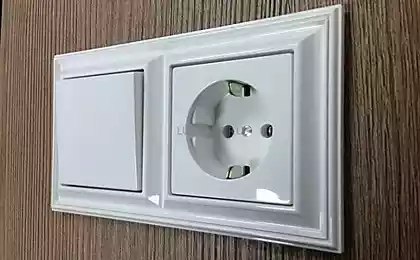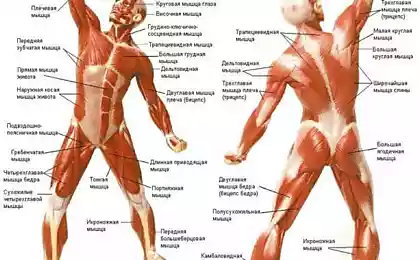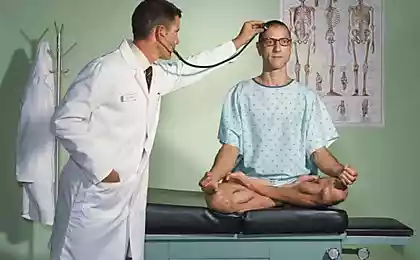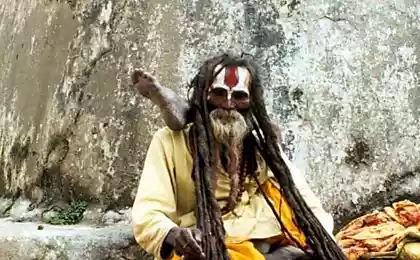946
Stress relief. Restorative yoga.

Restorative yoga is a passive practice in which relaxed postures are held for a few minutes. To minimize the work of the muscles that are involved in performing asanas, blankets, blocks and rollers are used. This practice helps the body rest, stretches muscles, lowers heart rate and blood pressure, and calms the nervous system. But while restorative yoga is easy for some people, it is a challenge for others.

“Many people think this practice is designed for sleep and rest,” says restorative yoga teacher Gillian Pransky, “but in fact, if a person is in distress due to illness or grief, practicing asanas can cause even more anxiety.” After all, the weakening of control over the body can seriously overstrain the nervous system. Passive asanas cause discomfort for many reasons. On a physical level, this is due to the fact that you do not control the body – the muscles are relaxed, the eyes are closed, and the chest and abdomen (the location of vital organs) are not protected. In many restorative poses, the body spreads on the floor, and the skeleton does not rest on anything - this causes anxiety and discomfort.

At the emotional level, restorative asanas may not be perceived by the mind due to the passivity of the body. This means that the mind is not engaged as if you were practicing active postures that require concentration. In this scenario, the emotions you experienced during the day – fear, disappointment, sadness, anxiety – will come to the fore once the body relaxes. The fact is that deep immersion in a meditative posture erases the boundaries of physical form. If you are in a good mood, it will help expand the experience and give a feeling of bliss. But if you are experiencing difficulties, the loss of physicality will frighten and disorient.”

Just because restorative yoga can cause anxiety and discomfort doesn’t mean you shouldn’t practice it. In fact, stress is the most favorable time to practice. According to Pransky, the practice of relaxation will work if you maintain passive postures with various props – this will create a sense of unity and security in the body and mind, and therefore peace.

1. Viparita Karani
Position of the bent candle, feet on the wall (variation)
If you lower your legs in this position and rest your feet against the wall, the feeling of “standing” on it will ground and cheer. Lie on your back and put a high lining of blankets or rollers under your calves and feet. Cover your eggs with a blanket. Put your feet in the wall. Put another folded blanket under your pelvis. Relax your hands and place eye bags in your palms. If the upper back and shoulders are not relaxed enough, put blankets under them. Keep your head on the back. You should feel support along the entire torso, arms, neck and head. Your throat is open and unstressed. With each breath, feel the boundaries of your body, and with each breath, feel the ribs expand in all directions. Stay in this position for 5 to 15 minutes.
2. Salamba Balasan
Supported Child Position
Put the roller on the brick with the front edge. Lower into the position of the child, while the body should not fall on the support. Put your hands on the roller below. If your forearms or elbows do not touch the floor, fill the gap with blankets to feel support from your elbows to your fingers. The support under the arms helps relieve tension in the upper body. To relax the lower back, place a blanket on the sacrum. Turn your head in either direction and then change position. With each breath, feel the opening of the back surface of the body; with each exhalation, feel support under the chest and stomach. Stay in position for 5 to 10 minutes.
3. Supt Baddha Conasan
Related angle position (variation)
Supta Baddha Conasana reveals the entire front of the body: the pelvis, stomach, heart and throat. We protect these areas instinctively, so in this position, a person may feel vulnerable.
Place the brick under the top end of the roller. Sit at the bottom of the roller. Put the second roller under your knees and fold your legs into the Linked Corner pose. Wrap the blanket around the feet. Place the second folded blanket on the pelvis – it will create a sense of security. Lie down on the roller. Place the supports under your hands so that they do not hang. Stay in the pose for 5 to 15 minutes.
4. Shavasana lying on her side and Jathara Parivartanasana
posture
and abdominal twisting posture (variation)
a. Twisting is generally good for the nervous system, but some make breathing difficult (which can cause anxiety). Twisting with props gives more breathing space passing through the chest to the abdomen and back.
Lie on your left side, stretch your legs and rest your feet against the wall. Put a roller under the back surface of the body. Bend your right leg at the knee to an angle of 90° and place your foot on the roller. Place your left foot against the wall. Place the rolled blankets under your upper arm. Place the folded blanket under the head and neck so that they are in line with the spine. Stay in the pose for 2 to 5 minutes.
b. To twist, turn the body to the right side, on top of the roller. If you feel a clamp in the shoulder or chest, try to put a larger support under the arm - so that the palm is above the shoulder. You should feel the opening of the chest. Breathe smoothly. Stay in the twisted position for 2 to 5 minutes. Repeat the same thing on the other side.
5. shavasana
posture
Shavasana can be an overly open pose, especially when performed with the arms and legs divorced. Keeping your limbs closer together will make you feel more collected.
Fold the blanket and place it against the wall. Lie on your back with your feet in the blanket. Put another rolled blanket or roller under your knees so that the hip bones fall deeper into the pelvis. This will help ease the tension of the iliac muscle and allow the pelvis to relax. Place a folded blanket on your stomach so that your hips fall. Hands stretch along the body, palms look down. Put a small twisted towel under the curves of the neck, and a folded blanket under the head. Feel like you're being rocked in a cradle. With exhalation, allow the floor to support every part of your body: heels, hips, pelvis, upper back and head. Once you feel connected to the earth, start relaxing your mind by rocking it on the waves of breath. Stay in position for 5 to 15 minutes.
6. Inverted Shavasana
Dead man posture (variation)
Variation for those who feel vulnerable in ordinary Shavasan. Lie on your stomach. Turn your head to the right. Spread your arms out, bend your elbows. Take your right knee aside. If necessary, place folded blankets under the right hand, knee, hip, stomach. Fully cover yourself with a blanket. After a few minutes, turn your head to the left and change sides so that the body opens symmetrically. Stay in the pose for 5 to 10 minutes, releasing the entire front surface of the body.

























